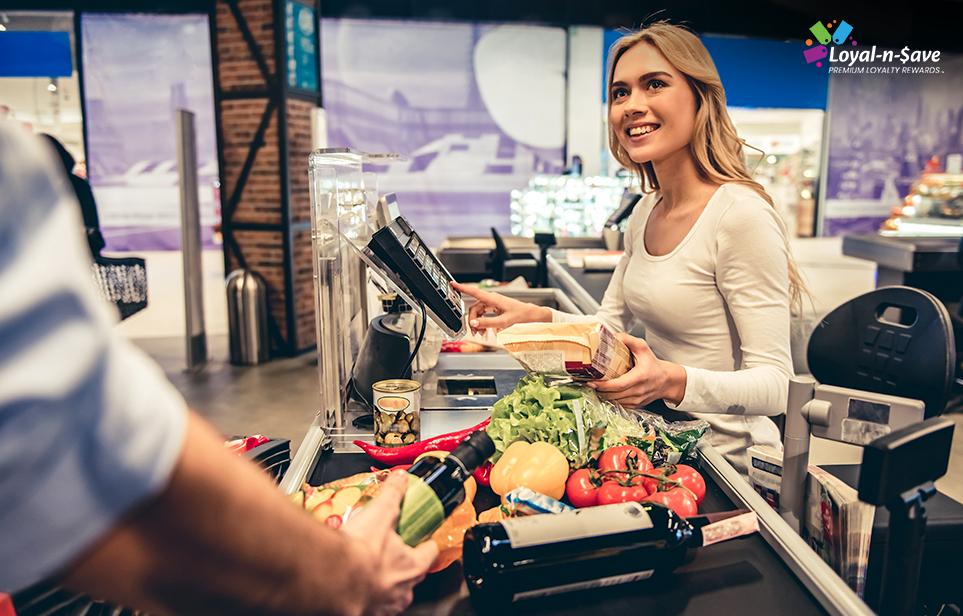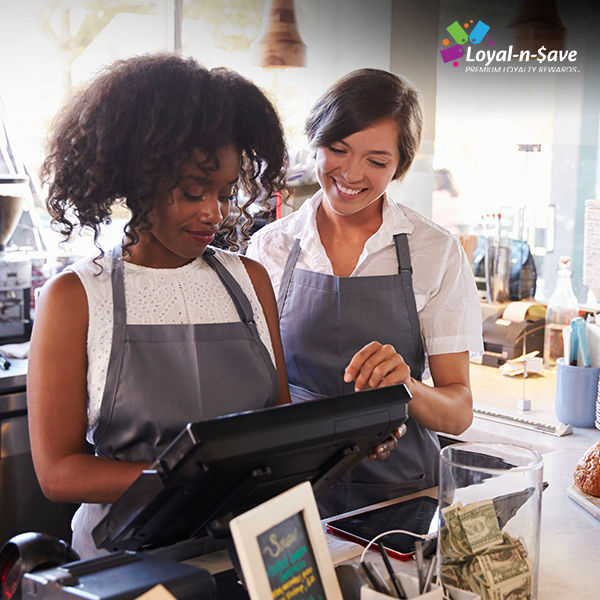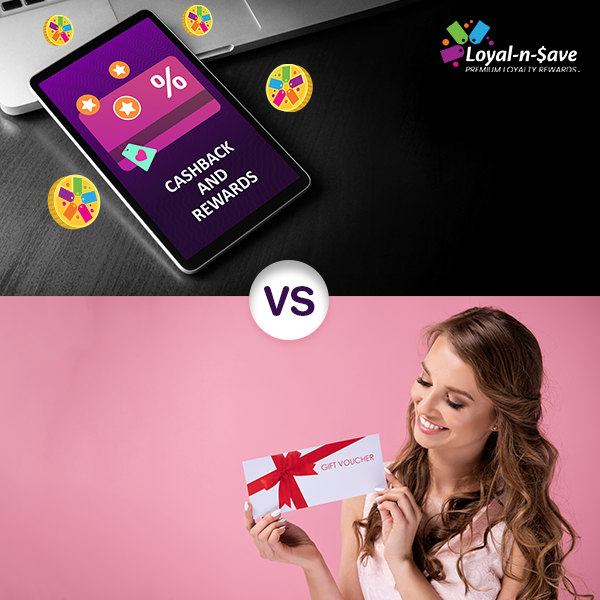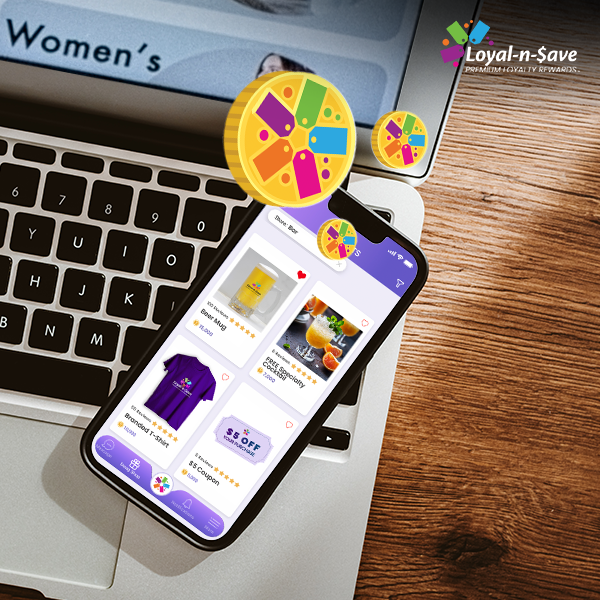Why Loyalty Programs Are the Backbone of the Grocery Industry

Everyone agrees that maintaining customer loyalty is important in almost every business because doing so is less expensive and yields a higher return on investment (ROI) than spending money on obtaining new customers. To add, you can only get so many new customers. That said, you should always look after the ones you already have. Customer loyalty is crucial in the supermarket industry now more than ever.
Many customers have changed their preferred grocery store retail suppliers as a result of the COVID-19 outbreak and customers’ switch to internet shopping. They have started doing their grocery shopping at stores that offer an omnichannel experience, have the items they desire in stock, or even straight from DTC (direct to consumer) brands. Customers may order their weekly groceries from the comfort of their couches by pressing a few buttons on their smartphone, then walk a short distance to find their groceries at their doorstep thanks to a grocery store’s delivery services. Since 2020, the battle for customer loyalty in the grocery industry has only gotten more intense. However, in this blog, we will dive deep into the importance of loyalty programs as well as how to create the best grocery rewards program.
What advantages can loyalty programs bring to grocery stores?
Higher CLV (customer lifetime value)
Grocery stores can greatly benefit from loyalty programs, which increase repeat business and customer lifetime value. Consider this: an article published by CNBC in January of this year stated that Americans spend, on average, $431 per month on food, or $5,174 yearly. One of the pieces of advice CNBC recommends to grocery retailers in reaction to the current reality we are experiencing is to launch a free loyalty program that is entirely free to join. Customers can take advantage of member-only discounts that are immediately deducted at checkout by signing up (without the hassle of clipping coupons).
Remember those motion-activated plastic dispensers that were strewn across the supermarket aisles and would dispense those coupons for 25 cents off a can of soup every time someone passed by them? The days of snagging a free coupon (or amassing a collection of them while shopping with our parents as children!) are long gone. Was it practical for our parents and enjoyable for us as kids to pass the time? Absolutely. However, now we can easily pull up an app on our phones, punch in a phone number on a screen, or scan a card and the discounts are automatically applied to our bill. No need to rely on the old-fashioned way of cutting coupons to save on the price of the ingredients needed for that Sunday stew!
Simpler customer acquisition
Another important consideration in choosing a grocery retailer is loyalty programs. According to a survey issued by Statista in March of this year, the global market for customer loyalty management is estimated to be worth over $4 billion and is anticipated to reach over $18 billion by the end of 2028. To add, according to Bond, if a company has a strong loyalty program, more than 70% of customers are more inclined to suggest it. Furthermore, if a company has a loyalty program, 77% of customers are more likely to stick with its services.
Zero-party data source
Using zero-party data from loyalty programs, grocery stores can enhance their marketing tactics and roll out more effective, customized offers. Your customers are no longer anonymous when you use loyalty programs to, for instance, collect all of the customer’s past purchase information (whether they scan their card at the register or sign in to the eCommerce store). Alternatively, you can send them incentive-based surveys as part of the loyalty program, ask them additional questions when they sign up for the loyalty program (which you can include them in the sign-up form), or add a second form for them to fill out in their profile with an incentive to share more information. Many fresh marketing opportunities open up as soon as you stay in contact with your customers and have a strategy for consistently engaging them.
Customer trends for 2022 in the grocery store industry
Here are a handful of customer trends related to grocery shopping that emerged in 2021 and will undoubtedly have an impact on customers’ loyalty to their regular supermarket providers. By adopting these trends, you can have the opportunity to have one of the best grocery loyalty programs.
Customers start making grocery purchases online
Online grocery shopping is on the rise, particularly since the COVID-19 pandemic began in 2020. The percentage of shoppers who claimed they have purchased groceries online increased from 52% in 2020 to 64% in 2021, as reported by the FMI 2021 Grocery Shopper Report. Many customers have switched to another provider who did if their regular provider of choice did not provide an online store or BOPIS (buy online, pick up in store).
Customers want a seamless omnichannel experience
Being everywhere and having seamless eCommerce integrations are standards for every grocery business since customers are shopping online more frequently and demand seamless transitions between online and physical experiences. The purchasing experience online and offline should be seamless, and the loyalty program should function on all customer touch points, notably smartphones.
Customers anticipate personalized offers
Grocery retailers are placing increased emphasis on personalized experiences. The reason? Customers demand it! According to research conducted by Epsilon, 90% of respondents said they found personalization appealing, and 80% said they are more likely to do business with a company if it delivers personalized experiences. For a few reasons, grocery retailers are placing a greater emphasis than ever on personalization.
Since they are continually bombarded with one-size-fits-all offers, customers pay more attention to individualized offerings. Another reason is that grocery stores now have far more data at their disposal to truly make personalized offers as a result of entering online sales. Additionally, due to the shift to the online marketplace, grocery stores now compete for market share with large online companies or DTC (direct to consumer) stores, and they must exert every effort to set themselves apart from the competition by offering a better deal or a better shopping experience.
Customers rely on a variety of delivery services
In addition to receiving their food directly from the store, customers are increasingly employing a variety of online services. This is good news for grocery stores, as they can still use partners like Instacart or Doordash to deliver orders straight to customers even if they don’t have their own delivery service. Instead of starting from scratch, it is undoubtedly a simpler and quicker option to enter the delivery market.
Best practices for grocery loyalty programs
Listed below are a few best practices for a loyalty program designed especially for grocery stores:
Eliminate paper coupons
Some supermarkets offer printed coupons to customers at the register or send them to them via postal mail as part of their loyalty program. Customers can even share paper coupons with one another. They can, however, be misplaced or easily faked. They also cost a lot of money and time to print and distribute. They can’t provide you with a lot of information and feedback to help you enhance your approach because they lack tracking and reporting as well.
Digital coupons can be used to prevent fraud, track customer purchases and actions, and specifically target only loyalty program members. Unique coupons allocated to specific customers are very useful for this. You can only enable certain customers to use specific coupons, which you can assign to them. If you still want to offer printed coupons to your less-digitized customers, such as those who are less likely to utilize mobile apps, you can use a digital coupon system and print the digitally managed coupons. However, the core idea—using an online system to manage your reward coupons—remains true.
Achieve omnichannel existence
All of your sales channels must provide a seamless customer experience, according to customers. Your loyalty program should be accessible both online and off, and it should offer the same features, information, and interactions everywhere.
Don’t stop at loyalty cashback
While discounts and direct cashback are the most popular loyalty incentives among grocery shoppers, they are expensive and offer little value to the retailers. It is more effective to use various incentives in addition to or instead of cashback. For instance, store credit, loyalty points, or gift cards may be more advantageous because they cannot be redeemed immediately; instead, they must be redeemed at a later date, which encourages repeat business and builds consumer loyalty. Additionally, if a customer does not return to complete their purchase, some of the store credit may go unused, saving the budget, targeting only the returning customers).
Other suggestions for a loyalty program’s incentives include:
- A loyalty program with points that may be redeemed for prizes
- Special savings that are automatically applied are exclusively available to loyalty members
- VIP coupons that are exclusively given to loyal customers
- A separate checkout line, faster delivery choices, the ability to scan items in self-service mode, the ability to pay for purchases later, free home delivery, or free BOPIS (buy online, pick up in store) are just a few examples of the special treatment given to loyalty members
Offer personalized loyalty promotions
Customers demand customized offers, which, when implemented properly, are more effective than standard offers. Make sure you offer the right incentives to the appropriate audience if you decide to give your devoted customers discounts, coupons, or other forms of deals in lieu of points or rewards. It might be simple segmentation and distinguishing the offers based on customer segment, or 1:1 personalization based on the customer’s preferences.
Create tiers for your loyalty program
Not every customer is as committed to your business or spends the same amount of money there. They don’t all merit the same rewards and treatment. By developing a tiered loyalty program, for instance, on your customers’ annual spending amount or frequency of purchases, you can differentiate the offer you make to them.
Introduce limited-time retention promotions
You can introduce time-limited offers directed at your loyalty program members to encourage them to make more purchases from you during a specific period. To encourage them, you may, for instance, introduce special specials (like 10% off take-home salad kits exclusively on Thursdays), coupons with expiration dates, double-points days, or alter the monthly quantity of points that can be earned on specific product categories or brands.
Each reward should have an expiration date
Add an expiration date to all of your rewards if you want to encourage customers to visit your store again soon. They will need to return if they wish to use them. As long as it’s permissible in your country/state—some US states forbid adding an expiration date to gift cards—you can create time-limited discount coupons and add expiration dates to loyalty points and gift cards, to name a few ideas.
Enhance your grocery loyalty program with gamification
Compared to conventional loyalty programs, gamified ones offer better participation and satisfaction rates. How can your loyalty program be made more game-like? Consider naming your loyalty program, creating a loyalty currency, and giving all customer communications a fun tone to make them feel game-like. Introduce achievable levels (tiers), prizes that require customers to take certain actions or accumulate a certain number of points in order to be eligible for the reward, double point days, challenges, raffles, and contests.
Widely publicize your grocery loyalty program
Many retailers overlook promoting their loyalty program outside of the store. Advertising your loyalty program at the checkout makes perfect sense because, of course, its participants should already be regular customers. On the other hand, if you implement a reward program and you also provide an online store or BOPIS, you may gain more customers as a result of the loyalty program. However, in order to do that, you must promote it to potential customers outside of the brick-and-mortar establishment. Consider PPC, social media, or display ads in addition to TV, magazine, and billboard commercials. Find out what appeals to your target market. However, keep it broad, especially if you provide home delivery.
Restrict the Amount of Each Customer’s Loyalty Discount
Occasionally, small business owners and entrepreneurs may benefit from it if the promotions being offered are particularly great or the cashback is at a high level. Limiting the discount given per customer, the number of items on promotion purchased per customer, the maximum number of loyalty points accrued, or the number of items that can be purchased using discount coupons will help you spend your budget on fostering customer loyalty rather than squandering it on making wholesale shopping more affordable for businesses. Create sensible boundaries that will enable you to focus on the intended, devoted audience.
A store credit card should not be linked to your loyalty program
Many stores make the error of just tying the rewards of the loyalty program to the store credit card, which means that only purchases made using the store-issued credit card would get the discounts). It is quite constricting because many customers might not desire a store-issued credit card. Grocery stores use it to advertise their credit card subscriptions, but in the process, they lose important customers.
Both a loyalty program that accepts everyone (subject to certain restrictions) and one that advertises the store-issued credit card are possible. One way to do this is by providing credit card holders with extra points or discounts. You can create a tiered loyalty program where individuals who do and do not have store-issued credit cards receive different incentives.
Overview
Grocery store loyalty programs are a crucial marketing tool for long-term revenue growth. Customers nowadays typically expect their grocery stores to offer multichannel, personalized, and gamified loyalty programs. Nevertheless, creating such intricate loyalty programs typically involves a lot of effort and money.
The ideal solution for your grocery store is Loyal-n-Save. With customized, simple-to-use programs created around business goals, we assist grocery stores of all sizes in maintaining their customer base. Utilizing a dashboard designed for marketers, creating a loyalty program that works for your business is quick and easy. With Loyal-n-Save, you may alter the rewards, tiers, and earning requirements for your loyalty program. Contact us today to arrange a consultation and have one of our experts give you a demo! You’re a phone call away from creating the best grocery store rewards program!
This article was written by Loyal-n-Save, an omni-channel customer loyalty solution for retailers looking to increase customer retention and new customer acquisition.
Posted on Aug 25, 2022








